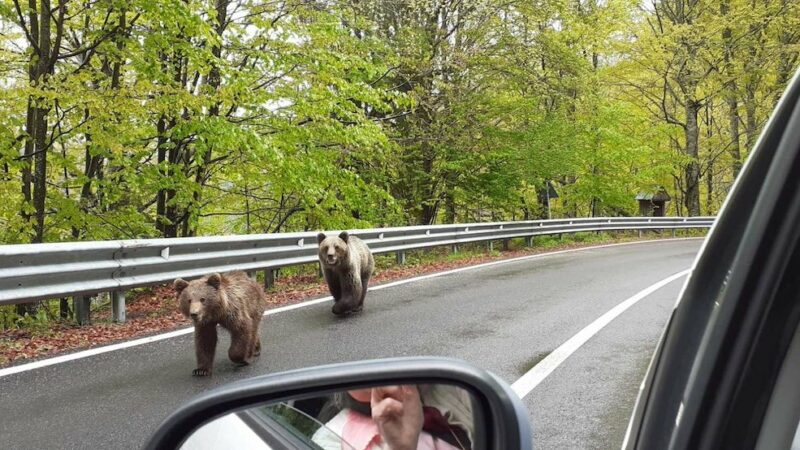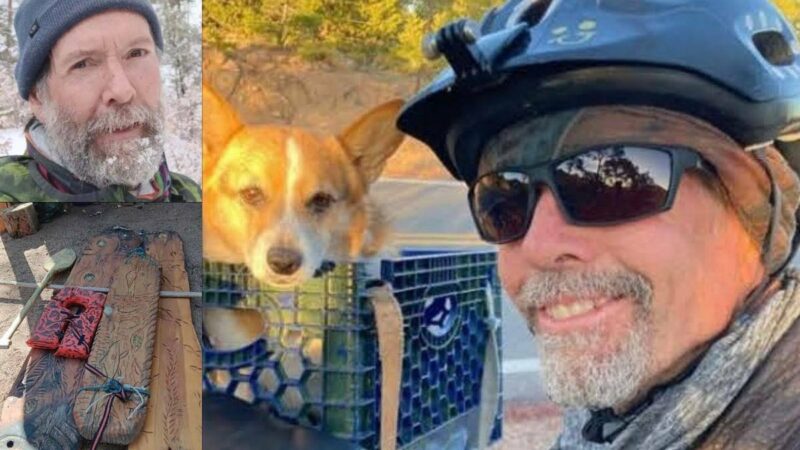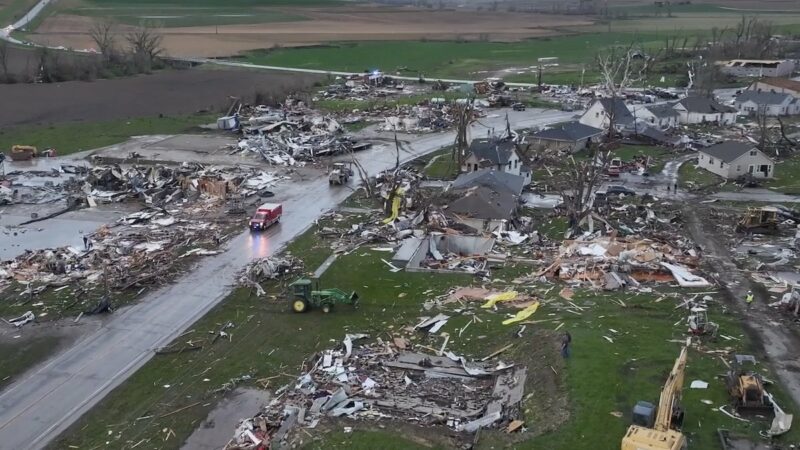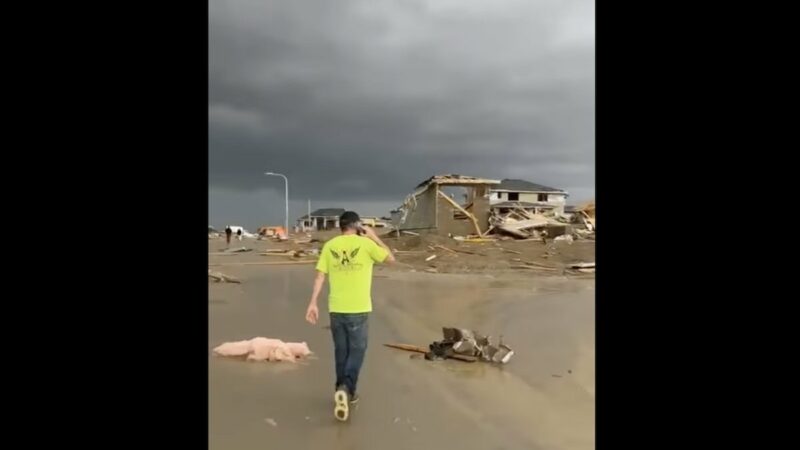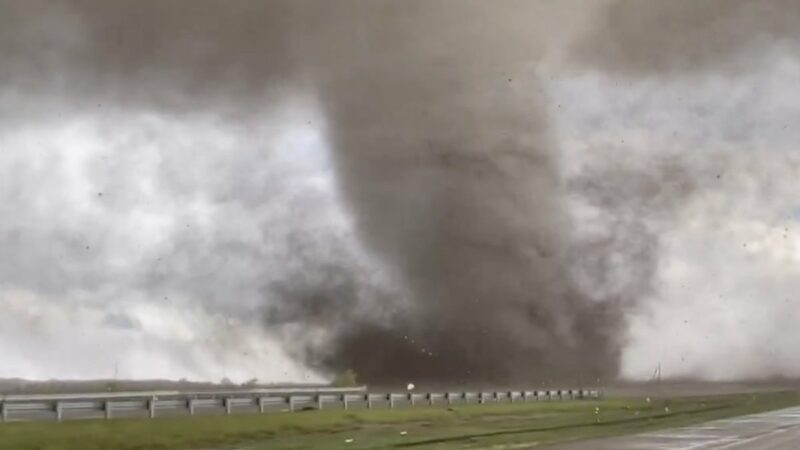Almost History: Inside a Failed Polar Expedition
Last month, 25-year-old Jacob “Val” Meyers set out to become the youngest person to ski alone and unaided from the edge of the Antarctic continent to the geographic South Pole. He secured over $140,000 in fundraising and sponsorships, he trained for over two years, he poured his heart and his life savings into this world-record attempt. Then, 13 days into the expedition, he gave up.
Videos by Outdoors
A failed expedition. It’s not the kind of story that usually makes the news. And yet, there’s a lot to unpack here—about what it means to make the right call, even when other people view it differently, or about sacrificing hours already passed and dollars already spent so that you do not sacrifice something that is ultimately much more important.
In the moment of his decision to pull the plug on his polar expedition and world-record attempt, Meyers’ mind was clear. He was in pain, yes, but he was also composed. He is an endurance athlete and a professional guide. He is trained to make level-headed decisions, even in extreme circumstances.
Meyers made the call to abort the mission, and it was the right one. And yet, it still haunts him.
“Anyone who is more risk averse than I [am] considers me a very wise young man capable of making good decisions in the field,” Meyers told me over a video call, just days after he was back home in Bozeman, Montana. “And everyone who’s less risk averse—anyone who likes to live more dangerously than me—probably sees me as a coward.”
Meyers knows he’s not a coward, but I could see him struggling, grappling with how to process what had just happened.
To those people who would call him ‘coward’, he said:
“They don’t have to live in my body. They don’t have to go to my job. They don’t have to look my fiancé in the eye at the end of the day.”
Sometimes, as adventurers and as people, failure teaches us more about ourselves and about life than success. Meyers is walking through this right now.
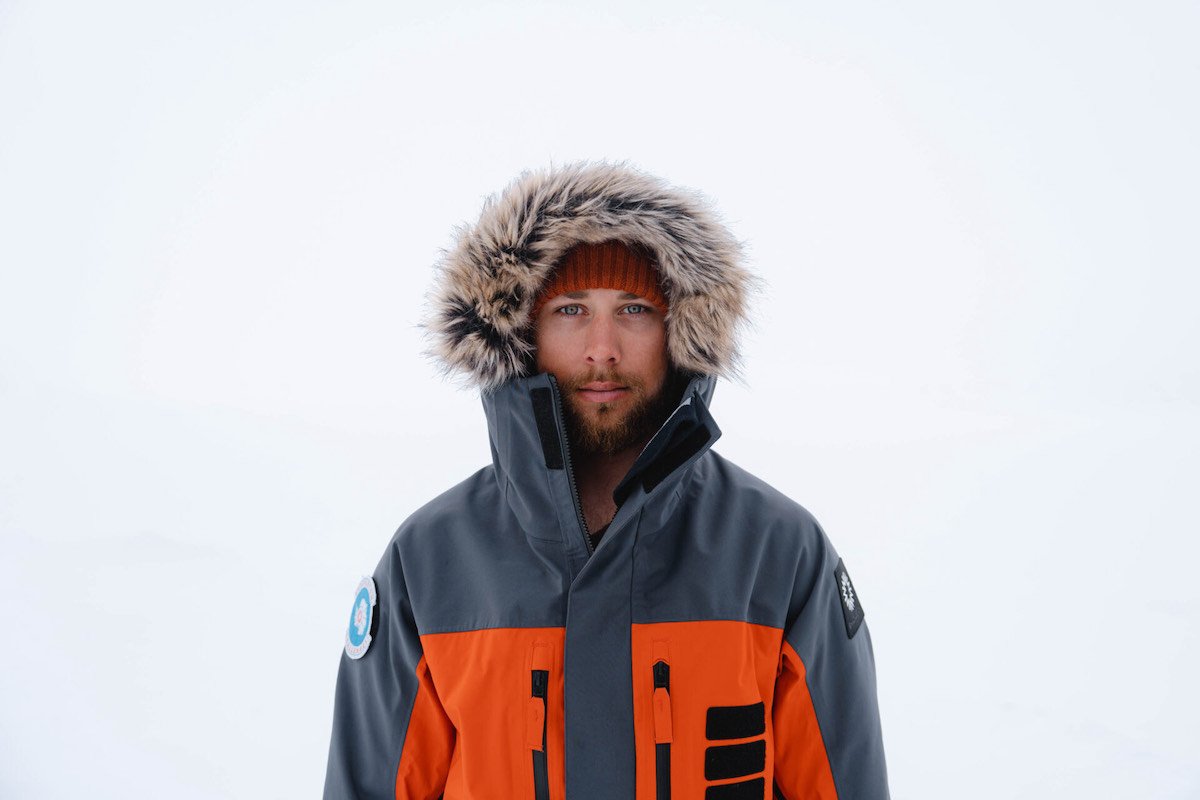
Pre-Exped: Preparation
In 2018, Meyers was in a bit of a situation. He was just finishing up college, and he was homeless, living out of the campus parking garage. Meyers had grown up in a small mountain town in North Carolina, and, after school, he wanted to go back to what he knew—the mountains.
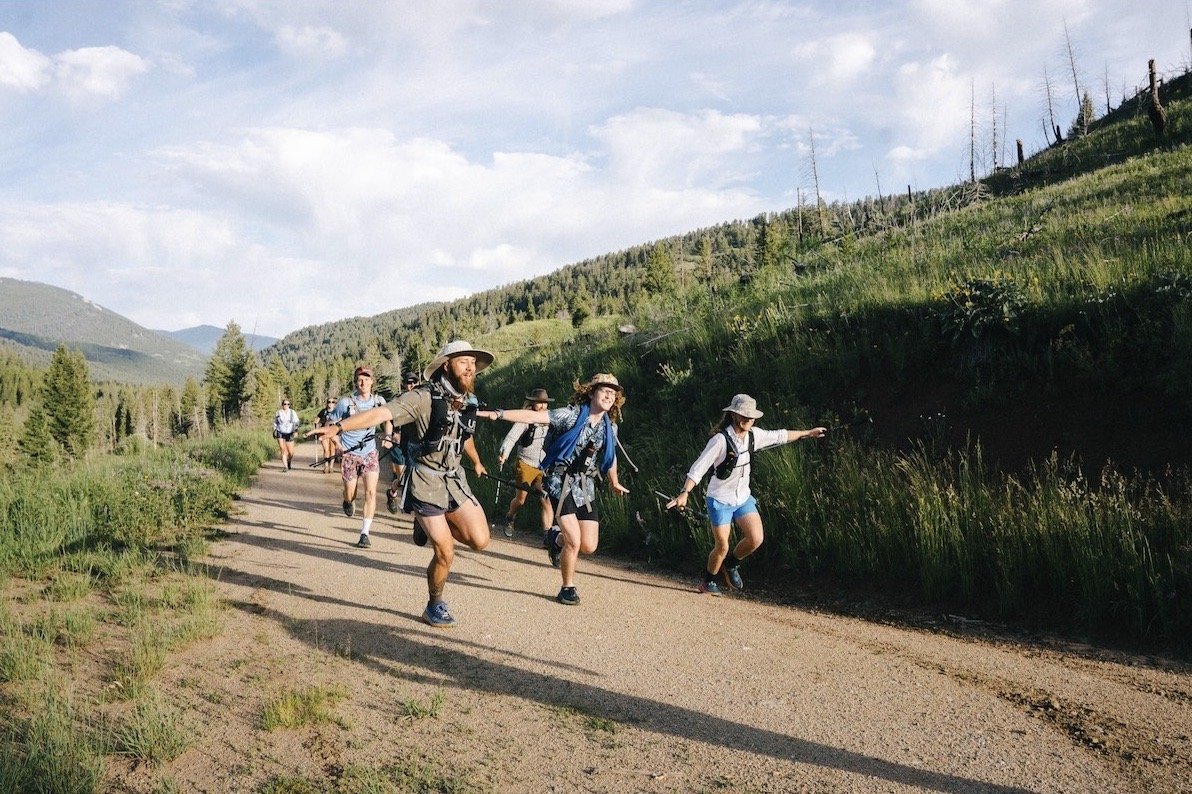
“I decided I was going to try and make it as an outdoor professional,” he says. “I realized how few things I needed to really be happy in life. And I was really sort of chasing experiences at that point. So I went back to North Carolina.”
In April 2019, during his first backpacking trip, Meyers got caught up in a gnarly storm. His family thought the experience might have cured him, but it did the opposite; it fortified him.
“Trees were falling all over the trail and [. . .] I couldn’t navigate, and it was dark, and I called search and rescue, and they told me they wouldn’t be able to come and get me as I wasn’t injured,” he recalls. “I was stage-one hypothermic and getting worse, but I wasn’t ‘injured’, and they didn’t want to risk sending someone out to get me. I eventually walked out of that situation. [The] sheriff’s deputy was waiting for me. I finished the trail. They wrapped me in a bunch of blankets and filled me with tea and tried to take care of me, and my family said ‘That went horribly wrong. So you’re done with this now, right?’ And me, even as I’m quivering in my bed, I was saying no.”
“I’d learned more about myself in this experience than from anything else I [had] ever done in my life. And I took to the outdoors with this mission of trying to shape myself into the person I wanted to be by doing hard things.”
Backpacking led to longer thru-hikes, which led to ultra-marathons. Then, Meyers turned his eye toward polar exploration. In fact, he thought he’d try to do something that had never been done before, at least by a 25-year-old person: to ski alone and unaided from the edge of Antarctica to the geographic South Pole. The world-record attempt would be called the “Youngest to the Pole Project” by Shackleton, Meyers’ employer and one of the expedition’s sponsors.

Training for a Polar Expedition
To train for the Youngest to the Pole Project, Meyers moved to Montana and started doing some intensive research on polar skill sets. He essentially fashioned a self-course on polar survival, then put his efforts to the test during a week-long expedition in Norway with a team. To really test his mettle, though, Meyers needed to do a solo expedition. So, he returned to Norway at the beginning of 2020 and did 21 days in isolation on the Hardanger Glacier.
Already trained in wilderness first aid, avalanche safety, and navigation, Meyers next turned his attention to his fitness. And that involved tractor tires.
“The day-to-day training was mostly harnessing myself to tractor tires and dragging them around the ranch that I live on here in Montana, as well as a ton of mountain running,” Meyers describes.
To get his body ready for the extreme cold he’d be facing in Antarctica, Meyers also had to spend a certain amount of time in the field in an environment that was colder than -30° Fahrenheit. For this part of his training, he had to get creative.
“Last winter, we had a very cold winter, [and] I’d lay down in the creek, and I’d wait until my body got very cold and I was losing dexterity my fingers, and then we would make me set my tent up outside my cabin by myself, and I would have to build my entire camp, and then I forced myself to reheat inside my sleeping bag to sort of stimulate would it be like to bring myself back from a dangerous cold. Because I was gonna be alone for the whole journey, right?”
Fortified, fit, and prepared with the necessary survival skills for a polar expedition, Meyers was on to the next step, which was interviewing before the Antarctic Logistics & Expeditions (ALE) logistics board. The board would consider his quest and approve or deny him for the opportunity. He was approved.
Meyers now faced the task of completing his fundraising efforts, which would cover the logistical costs of an expedition in one of the harshest and most remote parts of the planet. Over the course of two online crowdfunding campaigns, Meyers reached his goal. He raised over $110,000, including sponsorship money from both Shackleton and Roebuck, the details of which he could not disclose. With the help of his life savings and some loans, he was now in at a little over $140,000.
The stage was set for Meyers’ world-record attempt. Everyone he knew—and a whole lot of people he didn’t know—were cheering him on from near and far. Meyers felt good about his chances.
Turns out, Antarctica didn’t care in the slightest.
The Exped: 13 Days, 128 Miles
The plan was for Meyers to start his expedition on November 18, 2023 at Hercules Inlet, just inside the Antarctic Peninsula. From there, he would ski over 700 miles through storm-grade winds and wind-blown snow ridges called “sastrugi”—all in temperatures around -40° Fahrenheit—until he reached the geographic South Pole.
The journey was supposed to take around 45 days. During that time, Meyers couldn’t accept resupply or help. He’d be on skis, pulling his 250-pound pulk, a specialized sled full of survival equipment, as he made his way across the Antarctic continent.
The first setback was a delayed departure. Meyers’ expedition couldn’t kick off on November 18, due to continuous storms on the coast and at Union Glacier Basecamp. The storms over the blue-ice runway in Union Glacier posed a threat for pilots attempting to land.
The delay was minor, however, and Meyers was able to set out on November 22. The first few days went okay, except that Meyers felt he wasn’t making good time. The sastrugi, which are like nature’s speed bumps, were annoyingly consistent, and that slowed him down. Weather conditions were also okay; he actually felt hot at some points and skied shirtless to keep himself from overheating.
Then, the whiteout began. Late in the day on his third day of the expedition, Meyers entered a “white tunnel” that he would not emerge from for about eight days.
“This is complete flat-white conditions,” Meyers says. “I can’t perceive my next step, so I don’t know if my skis are going to be raised up three feet on top of sastrugi or if I’m about to ski off a small embankment until I’m physically taking that step, because I can’t see anything.”
Meyers’ Garmin inReach satellite communicator, his connection to the outside world, gave him weather updates. At first, he thought he’d be in for whiteout conditions for just a couple of days.
“I can handle two days of anything,” he says. “[But] then two days became three days. It said one more day. Okay, I’ll race for four days. And when it was all said and done, I didn’t see a single step that I had taken for almost eight days in a row.”
Whiteout conditions for eight days, alone, disoriented, and in his head. It’s a hard situation to imagine for most people, even those who enjoy challenging themselves outdoors.
“I mean, imagine this for a moment,” Meyers says. “You’re tethered with a harness to 250 pounds of equipment, and then you drag that equipment for 10 consecutive hours blind, and you turn around after 10 hours and you can’t perceive that you’ve moved a single foot. It was like that for eight days in a row.”
What made whiteout even worse was the isolation. Meyers was fighting some demons he’d brought to Antarctica from home. Shortly before the expedition, a friend of Meyers’ had committed suicide, and he’d recently lost another friend too. He hadn’t had time to work all of this out before he left.
“Traditionally, how I’ll process [stuff like] that is by running through the mountains,” he says. “Moving my body all day on the snow certainly helped, but when you can’t see more than five or six feet in front of you at any given moment, you really fall [into] your head.”
The Moment of Clarity
When the whiteout conditions finally cleared, it wasn’t the light at the end of the tunnel Meyers had hoped for. He’d blown through too many of his rations, and he’d developed nerve damage in his right shoulder as he was skiing.
On day 13, 128 miles into his expedition, Meyers says it was a bright, beautiful, and sunny day. His right hand was completely limp and unable to perform basic tasks. He pitched his tent one-handed.
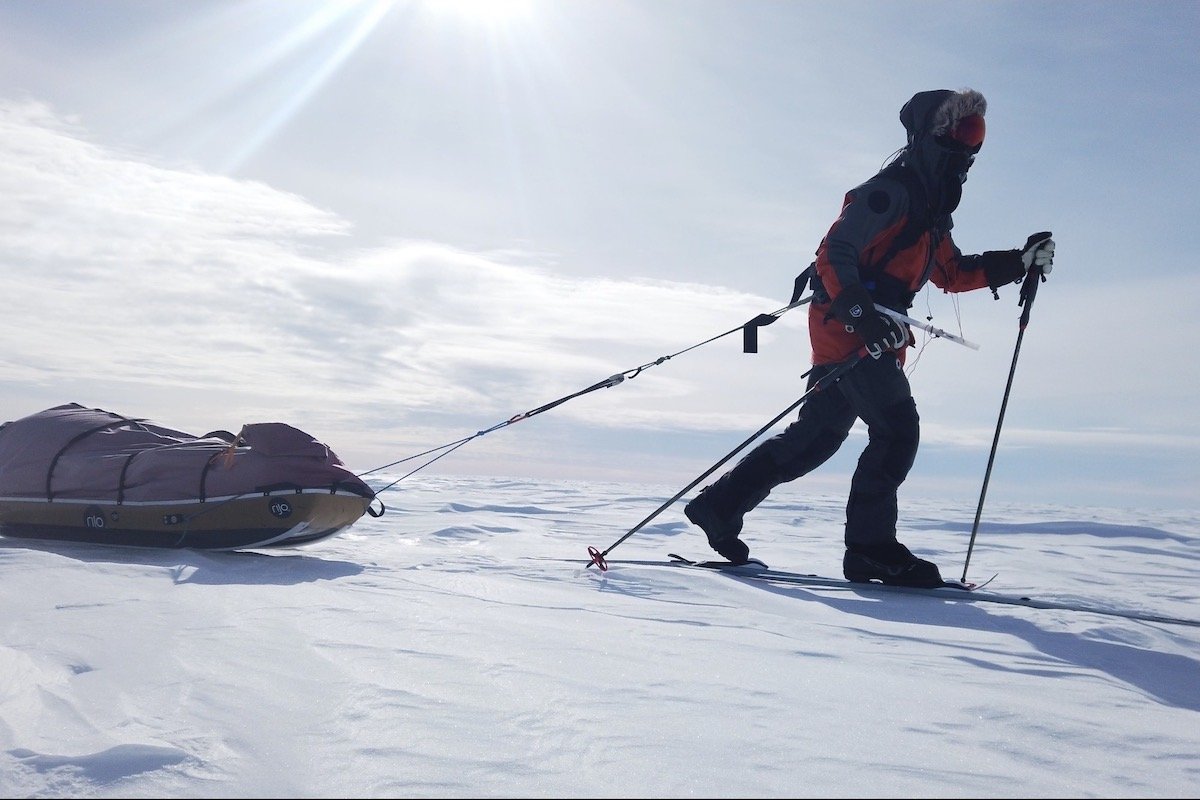
“I sat down for a while and tried to go over the options of how I could maybe address the situation, and ultimately I decided it wasn’t something that I’d be able to fix,” he said. “So I called search and rescue, and I pulled the plug on the expedition on day 13.”
He pulled the plug, but he didn’t do it in a moment of struggle. He’d made it through the whiteout, when, at times, he felt insufficient, struggled with imposter syndrome, and faced his demons at a caloric deficit and in negative-digit temperatures. Instead, he pulled the plug in a moment of calm.
“The moment of the call, I felt very sobered and composed. I’ve done a lot to train myself for these extended periods of isolation. I’ve done that before. I know a lot of frustrations come with the journey, and if you let yourself get too involved in how you’re feeling, you’re likely to make a bad call in the field,” he says. “So I was going through all the options, and this thing of the ‘quit’ didn’t really set in until I was back at basecamp, because in the moment, I was still one-handed in a very dangerous environment needing to rely only on myself to be safe.”
Meyers just didn’t like those odds.
Post-Exped: Processing
By mid-December, Meyers was back home in Bozeman, recovering physically and mentally from his Antarctic expedition that was cut short. He was happy to report that he could touch his thumb to his pointer, middle, and ring fingers on his right hand, but he couldn’t quite touch his right thumb to his right pinky yet.
“I can turn door knobs and open water bottles, and I can work a knife, which means I can cook in the kitchen again, which is nice,” he says. “I obviously can’t rock climb, can’t do pull ups. [. . .] The legs are recovering nicely.”
He told me confidently that if put in the same situation again, he would make the same call. He only had one functioning hand, and it wasn’t worth risking his life to finish the expedition. When Meyers sounded less confident was when he started to talk about the fallout from a failed expedition and where he goes from here.
“I’m confident in the call I made, but yeah, there was a lot of build up to this, a lot of fundraising, I drained all of my savings,” he says. “I took out loans, all these things went into this, and it’s a really heavy thing for me to carry right now that we don’t even know where my limits lie, right? If I’m gonna get pulled out of this journey, I want to get pulled out because I was at the very end of my rope, out of food, completely exhausted and had given this thing a really long honest bite, and that’s not what happened. [. . .] Despite my own pride, my own desire to figure out where my limits lie, I had to pull the plug and so prioritize longevity over this one expedition.”
Mentally, it seemed to help Meyers to look at himself and the situation as an outside observer—as if the whole thing had happened to someone else.
“I [have this] sort of numb view of myself,” he says, but he’s actively working on it.
“Having conversations like this or with close friends or with my therapist or whomever have been instrumental in helping me vocally process the whole expedition,” Meyers says. “I think I’m gonna come out of this pretty soon after the holidays, reinvigorated and not back to my old self but maybe into a new version of myself.”
Meanwhile, Shackleton has been publicly supportive. In an Instagram post announcing the expedition’s untimely end, the company wrote:
“The team at Shackleton, who know the hardships of polar journeys all too well, is proud of what Jacob has achieved and has no doubt that he will see great success in his next endeavours, whatever shape they take.”
The company also included a quote from Sir Ernest Shackleton, the famed Antarctic explorer who led one of the most famous failed expeditions of our time. The quote reads: “Optimism is true moral courage.”
‘Baptized’ by the Snow
Meyers jokes that he got “baptized by the snow” in Antarctica, and it’s a compelling image. He says he learned a lot over the course of just 13 days on a polar expedition that failed. In the end, might he have learned more about life and about himself than he would have if he’d had clear skies for 45 days and made it to the Pole?
“I think so much more [now] of how I want to exist in the space, [and it] goes beyond record setting, and I need to stop holding myself to the standard of people who’ve been in this game for three decades longer than I have,” Meyers says. “It’s gonna be a long, patient process for me to try to start operating on the level that I want to and start finding the kind of successes that I want to, so I’m playing a much longer game now.”
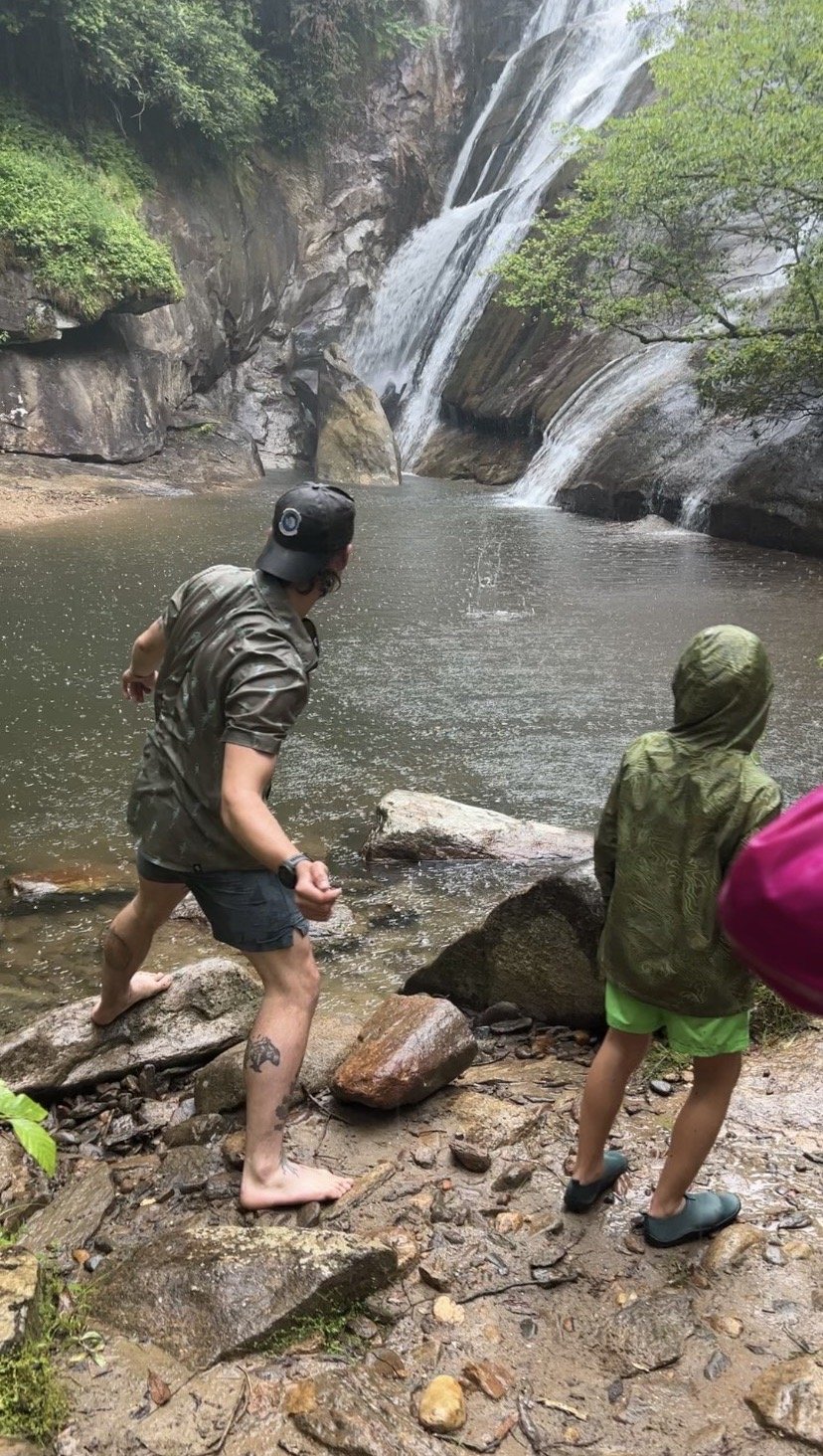
On a personal level, Meyers says he’s learned to value community more than he ever did before. He has a great mentor to help him through this, Louis Rudd; plus, he’s getting married to the love of his life.
He also has a lot left to do in the polar space and beyond. As to whether Meyers will return to Antarctica for another attempt to ski unaided to the South Pole, it may still happen.
“It would be a disservice to myself and everyone who stood behind me to not return, whether it’s in a personal-expedition capacity or in a guiding capacity,” he says.
Next time he reaches for any goal, he’ll be wiser, thanks to the lessons he’s learned this time around. He hopes his story will help and inspire other people to aspire to do difficult things, even if they might fail.
“I hope everyone who has followed this journey can find their own—for all intents and purposes—their own South Pole to ski in their life. It’s brought so much value to my life. I think it’ll bring infinite value to theirs.”
Source: https://outdoors.com/almost-history-inside-a-failed-polar-expedition/


